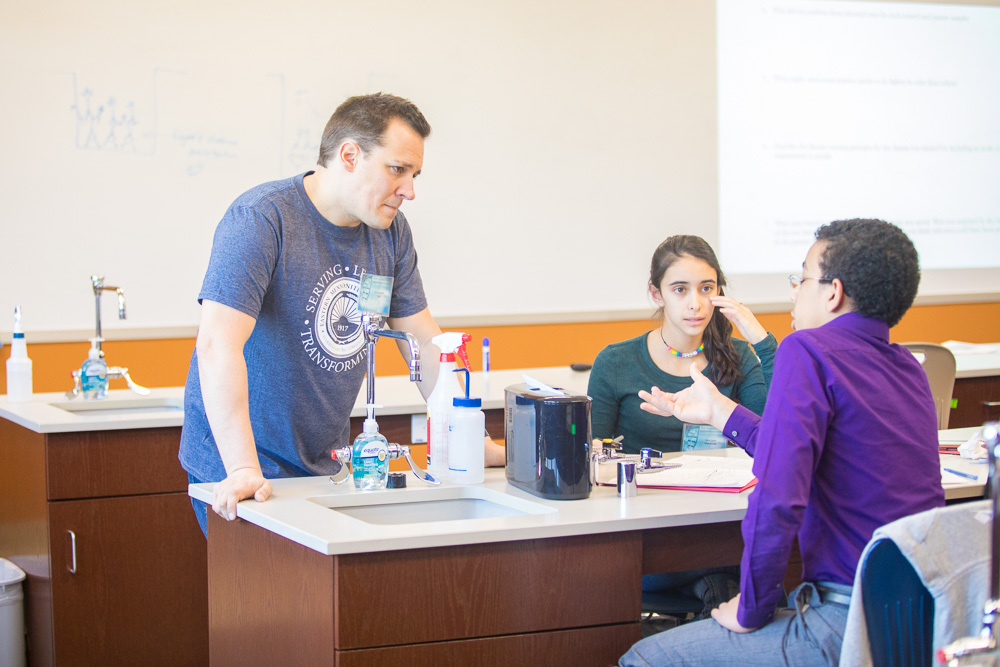The Shenandoah Valley Biotechnology Symposium went back to its roots on Friday. For its 25th year, the annual conference for area high school students returned to Eastern Mennonite University, which hosted the first one.
More than 400 students attended the event featuring several speakers and hands-on lab work. Myron Blosser, a biology teacher at Harrisonburg High School, started the event in 1994 because he needed help with some equipment.
Editor’s note: Symposium founder Myron Blosser earned two degrees at EMU: a BS degree in biology with secondary education endorsement in 1983 and an MA in education with a concentration in curriculum development in 1998. He was named the top biology teacher in Virginia in 2013 while teaching at Eastern Mennonite High School. He was EMU’s Alumnus of the Year in 2005.
The year before, Blosser had ordered biotechnology supplies hoping to jump into the relatively new field, but he didn’t know how to use them.

“I felt like a dog who had been chasing cars and caught one,” he said. “I had no idea what to do with it.”
So he mimicked Jim Watson, one of the discoverers of DNA structure.
“If he wanted to learn something, he would hold a symposium about it and invite the brightest minds, and then they would talk about it and he would learn,” Blosser said.
About 50 teachers and students came to the first event, Blosser said. Attendees begged for it the next year, and it has been held ever since.
It’s grown to more than 430 students this year and focuses on getting them excited about the field.
“A part of what I think we need to do with today’s youth is to not only talk about the exciting possibilities of application, but also to let them know this could be a viable income,” he said. “To be honest, something can be very exciting, but if you can’t pay your bills, you probably won’t go that direction.”
Watch WHSV coverage.
Ron Raab, a James Madison University biology professor, discussed job opportunities in criminal investigations and medical research. “There are a heck of a lot of jobs in biotechnology outside of being a lab rat,” he said.

After hearing from Dr. Francis Collins, director of the National Institutes of Health, the students broke into groups to study DNA sequences. Many worked with prepared samples, but an advanced class of about 100 students used their own DNA. They heated cheek swabs to isolate their DNA. The samples were added to a solution, inserted into a gel, and an electric current created a readable sequence.
“This is how molecular forensics work for criminal investigations,” Raab said. “They can take that speck of blood, that one hair follicle, that piece of skin cell and amplify enough DNA to run and get an analysis.”
Christiana Cole, a junior at Harrisonburg High, was at the symposium for the second straight year. She’s worked with DNA in class investigating mock crime scenes and paternity tests. Cole, who plans to study biology in college, said the symposium offered more opportunities to become familiar with the field.
“These techniques are used in class a lot of the time,” she said. “This is what you learn. These are the types of labs you do in college.”

Collins encouraged the students to pursue a biotechnology career.
“It’s both great science; it’s a detective story; it’s intellectually satisfying; but it’s also about people,” he said. “And it’s also about offering hope to those billions of people who have illnesses that are still waiting for answers.”
This article was published in the March 9, 2018, Daily News-Record.
